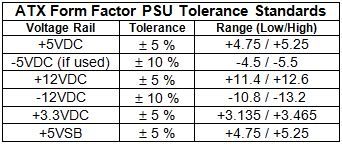I am really desperate. I should work on my thesis. Why does my PC break down now?
Short description:
PC does not start. Screen remains black. Fans run. No beeps (but not sure if my PC speaker is actually connected).
Longer, more detailed description:
I never shut down my PC. I always put it in Standby. Works perfectly.
3 days ago, when trying to awake it from standby:
- The fans start
- the LEDs (HDD, power) go on
- Screen remains black (monitor not turning on, actually. So no signal.)
- waiting (sometimes it needs longer to get out of standby)
- pressing reset: nothing happens.
- turning power off, turning power on
- Fans still starting
- IMPORTANT DETAIL HERE: When I start my PC and it was NOT in standby, the fans sound different. One of the Fans runs at full speed, being really loud. After a few seconds, it slows down, then it enters the bios, starts normally. If I awake my PC from standby, this does NOT happen. The fans run quietly from the beginning.
So in this case, after unnplugging and replugging, I expected the other start sequence with the fans being loud. Did not happen. Still slow.
- screen remains black
- I retry two or three times, I am desperate.
- I get my stuff, screwdriver and everything, prepared to open my PC and check for loose wires, whatever....
- I think: Lets give it one more try before I open it: I replug the power cable and start it
- et voila: It works!
- PC ran fine for three days. Was several times in standby, always awoke, always working.
- I play games, I work with the mashine, I watch DVDs and BluRays. I play hardware demanding games. But my system does not run hot. Lots of fans installed...
Today, this morning:
- Same problem, screen remains black. LEDs on. Fans run slowly. System does not wake up. Screen remeins black (monitor not turning on, actually)
- Unplugging, waiting, replugging, turning on.... nothing.
- I open the case. I unplug all HDDs
- replug power, same problem.
- I unplug the power, take out first one, than the other RAM (running dual channel)
-> no effect
- checked all plugs
Now what should be my next step?
What can be faulty? I think I excluded the RAM. And since the problem actually happened before but the problem sort of vanished and then the PC ran smoothly for 3 days straight under stress, I don't think there is something substantially damaged.
But what can it be?
Bios? Power Supply? Or is the CPU or Graphics adapter faulty?
I do not have a second PC nor do I have a friend with a PC near me. So I can't exchange components easily.
Can someone help me?
I'm desperate. I don't know what my next step should be. I think I will try to reset the bios. Could it be bios related?
CPU: Intel Core2Duo
Mainboard: P35C-DS3R
Graphics Adapter: Nvidia geforce 260 something... <-All cables connected. Including the additional 2 power cables. Checked that.
RAM: 2*2GB KIT from Kingston? King-something?
Edited by Finsch, 03 December 2010 - 07:02 AM.
















 Sign In
Sign In Create Account
Create Account

